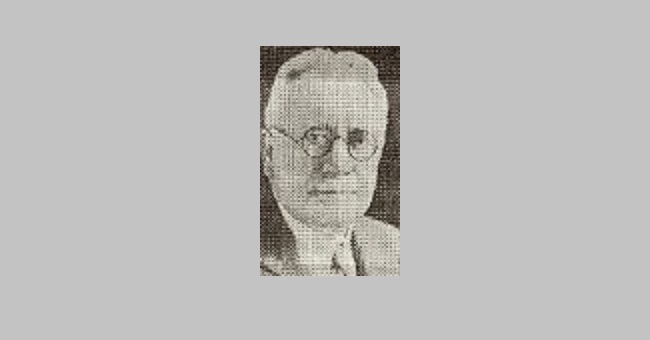by Mike Roberts, Church Historian
A few of the ministers that have served our church eventually found their way to serving Universalism on a larger stage. In 1902, Samuel Ayres was ministering in the small upstate New York village of Victor when he received the call to serve in Cincinnati. He had been ordained into the Universalist Church ministry in 1898 and the Victor church was his first assignment.
Ayres was born in Jersey City, New Jersey on July 23, 1870 to Samuel J. and Sarah Ayres. His father was born in New York and worked as a delivery clerk in New York City. Ayres mother was born in England. By 1880 the family had moved to and was living in New York City.
By comparison to his predecessors, Samuel Ayres stay in Cincinnati was lengthy serving from 1902 to 1909. During that time, the church was still settling into its new building and was redefining its role in a suburban neighborhood. One of Ayres first duties was to oversee and host the 70th session of the Miami Association of Universalists which was held at the Essex Place church.
A sampling of Ayres’ sermon titles during his stay include, “Gospel Conversations: Jesus and the Woman of Samaria” and “The Divine Indifference.” One newspaper notice states that one Sunday, Ayres delivered an 11 a.m. sermon on “The Place of Jesus in Religion” and later that day at 8 p.m. delivered a sermon on “The Personal Element in Religious Experience.”
In one of his first sermons delivered to the congregation, Ayres stated that “Life is difficult and mysterious to many. All classes in their several ways have endeavored to solve the problem of right living. Man has dug down into the earth and gone to the depth of the sea and taken forces of the great physical world, yet in this art of all arts, he is still the creature of his own passions. Life for him today is beset with difficulties. It may be said that he who has gained the victory in the science of life is always and everywhere the master of those difficulties which seek to pull him down. Happiness in the social world depends largely on living our own life in our class and in our means. We should seek to be ourselves, not shadows or imitators of others and use our own talents in our own way, so developing a personality that has some initiative.”
After six years in the pulpit, Ayres left Cincinnati for a calling in Woonsocket, Rhode Island. He also had a lengthy stay there not leaving until 1919. It was then that Ayres took on the role for which he is most remembered. He accepted the job as superintendent of the Universalist Church Japanese Mission and moved with his wife Minnie to Japan. He and his wife ran the mission there for 6 years leaving in 1925. The mission in Japan had been established to offer refuge for orphans and to teach the Universalist Christian doctrine to whoever in the population was interested. Mrs. Ayres said that in light of their belief in world-wide universalism, the focus of the mission was more on service and social relations with the Japanese. Ayres wrote a monthly letter published in the Christian Leader and frequently spoke of all the entertaining and lecturing they did in Japan in an attempt to establish relationships with the local population.
The Universalist Church in Tokyo was called the Central Church. Later a house for female orphans was opened called the Blackmer House. In 1923, the Yokahama earthquake struck the mission hard, destroying the church and badly damaging the Blackmer House. The earthquake was measured at 7.9 on the Richter Scale and left an estimated 140,000 people dead. The Ayres helped rebuild and then left the mission and returned to the United States in 1925.
Upon their return to the U.S., Minnie and Samuel Ayres were active in promoting the Japan mission through speaking engagements and tours. In 1928, they visited Cincinnati to promote the mission and renew old acquaintances.
Sadly, the Central Church and Blackmer House were destroyed by American bombing at the end of World War II. Little physical evidence of the Universalist presence remained after 1945 but a small group of Japanese Universalists was still worshiping there after the war.
Minnie Ayres was also very active in the Universalist youth movements serving in several national capacities. She also played a regular role in the annual national conventions. By 1930, Samuel had returned to the pulpit in Lewiston, Maine. In 1934-5, he substituted for a pastor on leave in Worcester, Massachusetts and in 1940, the Ayres were living in Southover, New York on Long Island. The Ayres had two children, Gilbert B. and Charlotte. Samuel died in 1955.
Image: Rev. Dr. Samuel Ayers, 1934
Image courtesy of UU Church of Worcester

